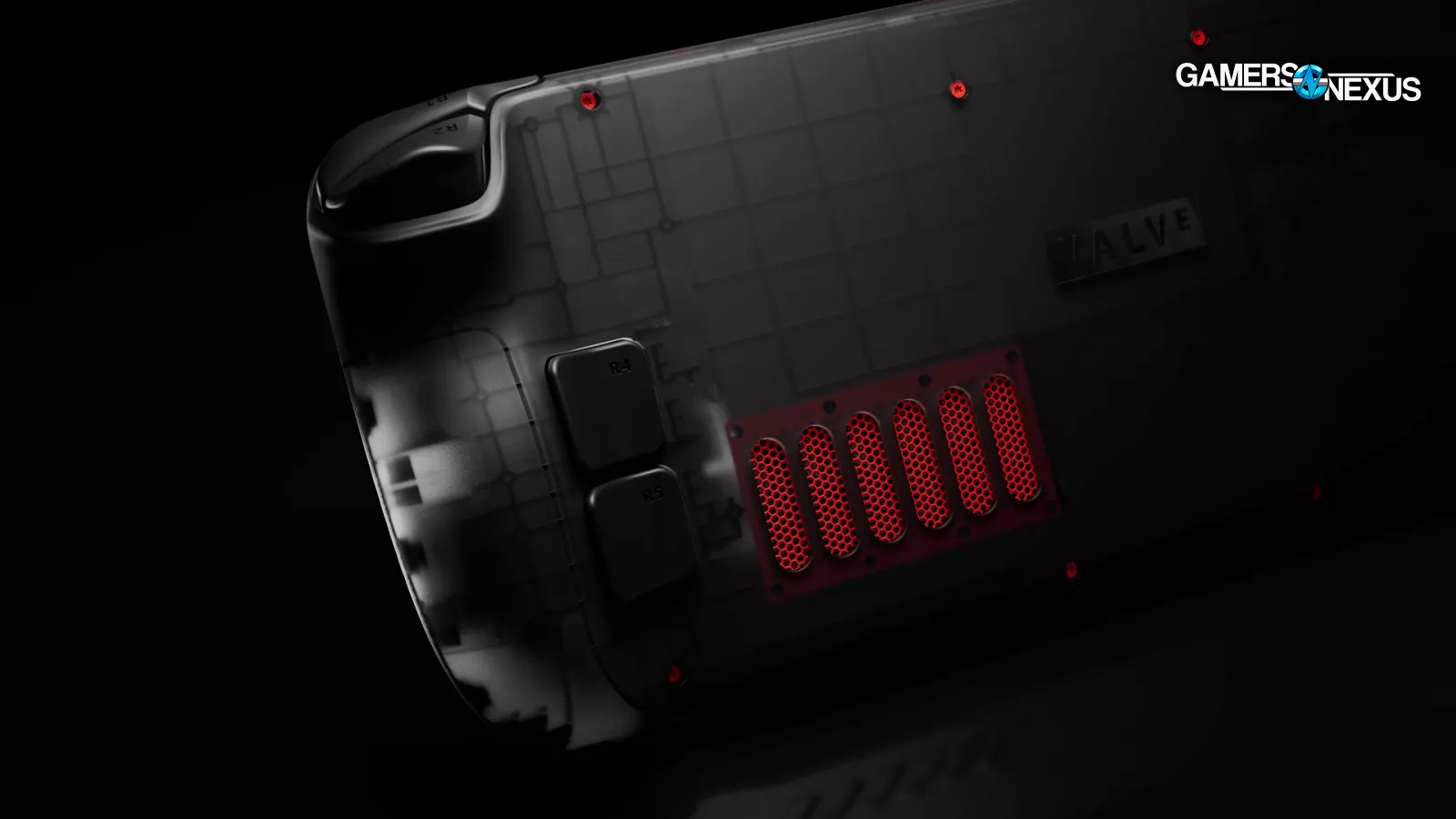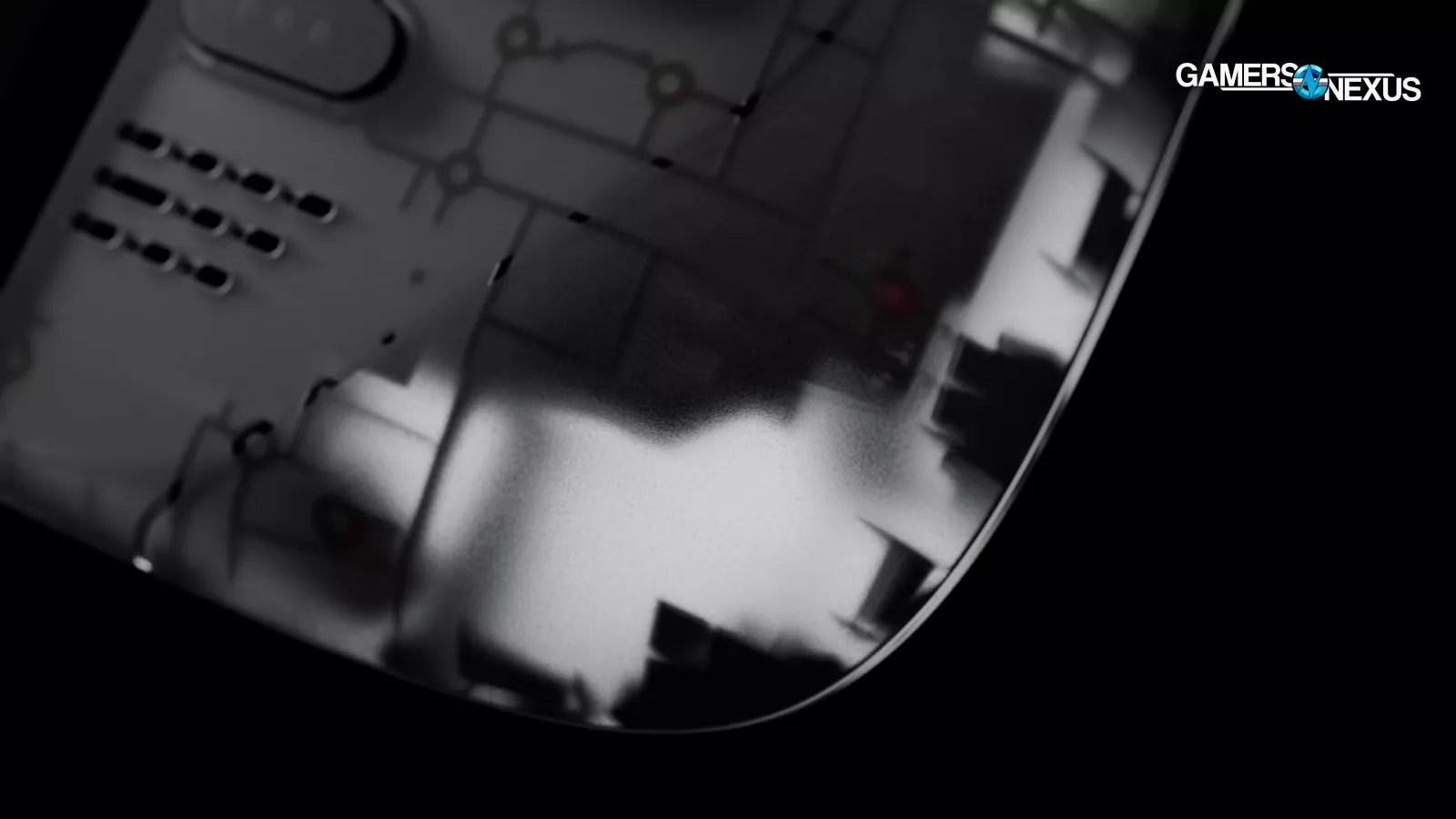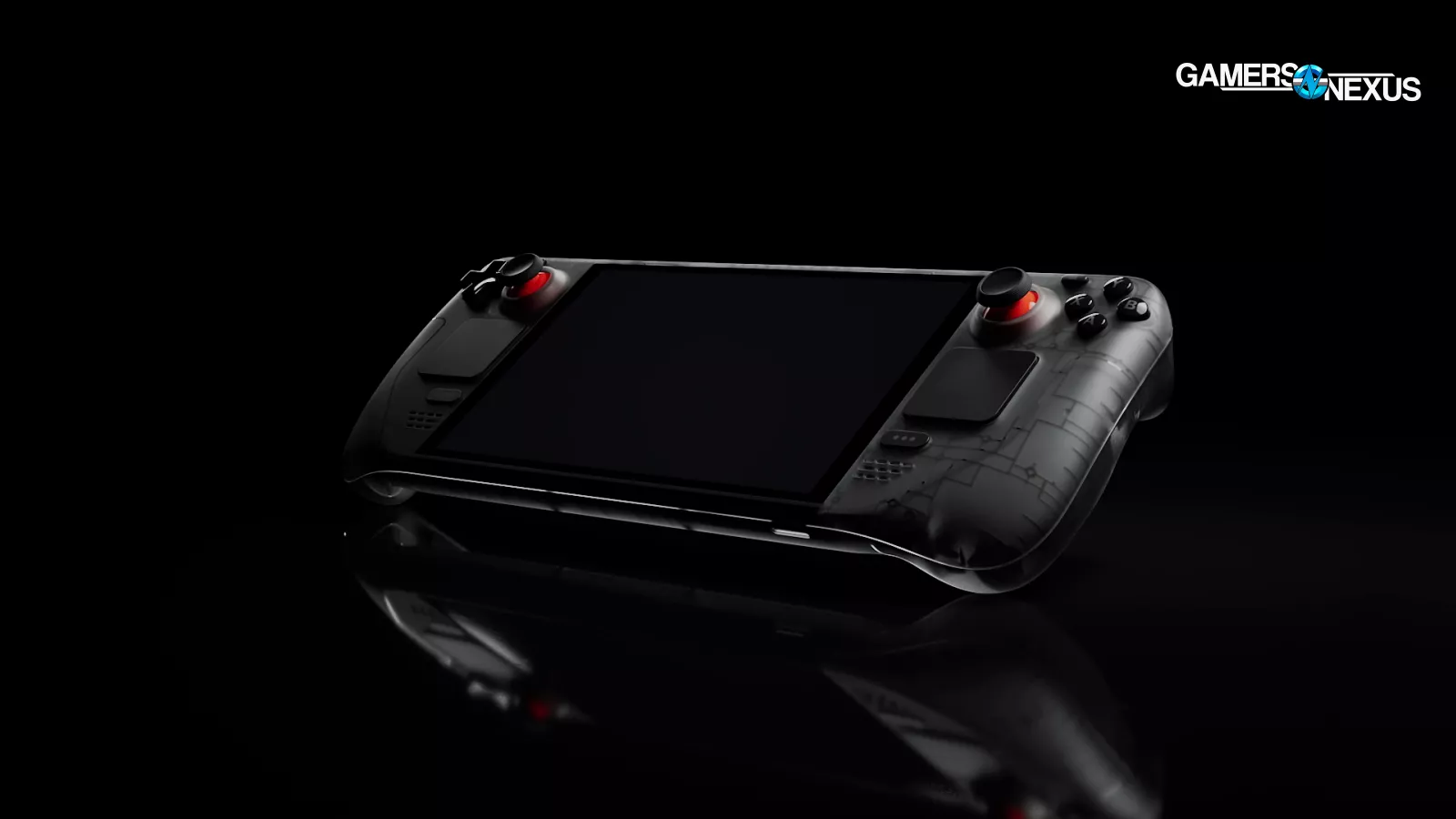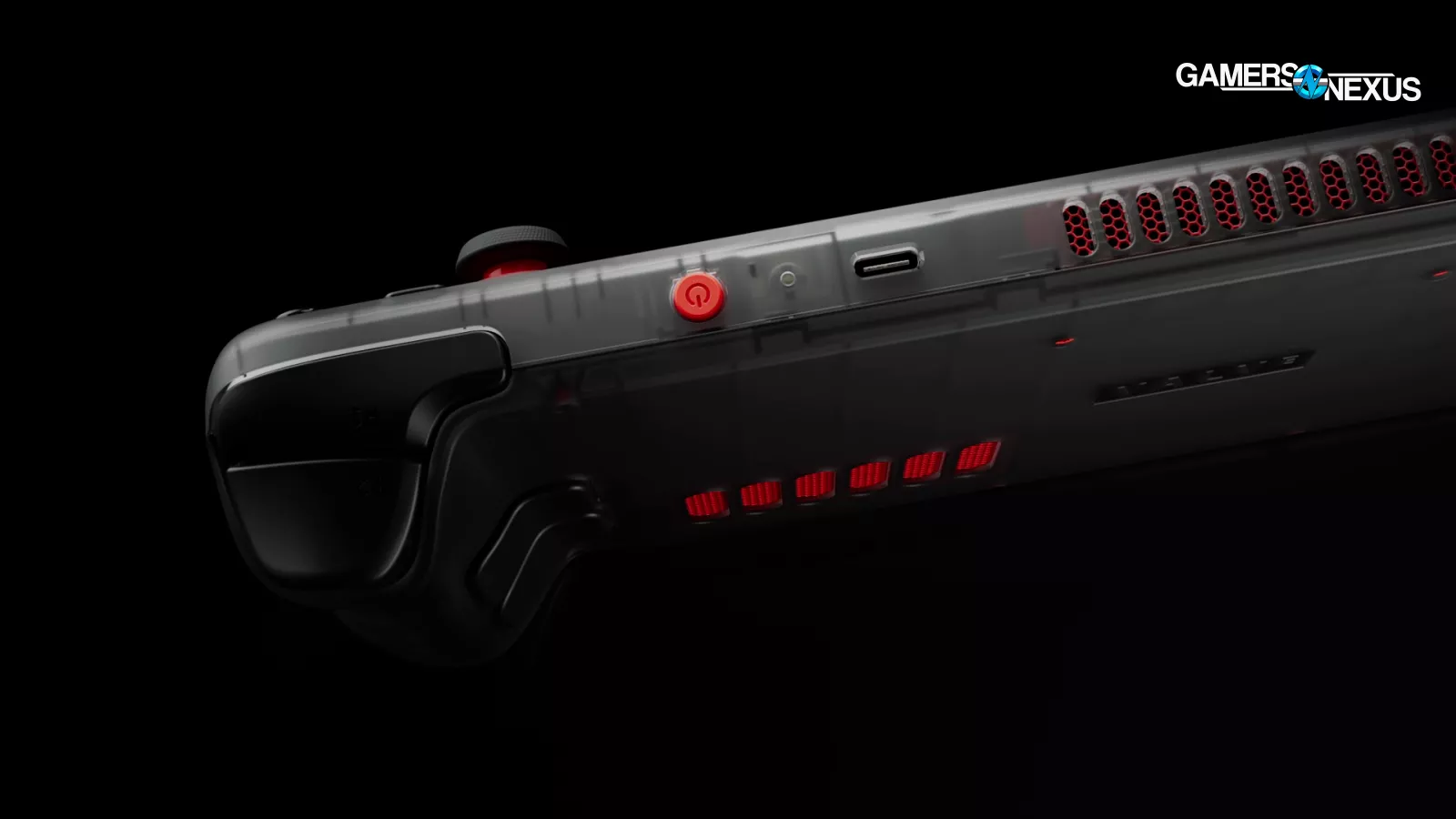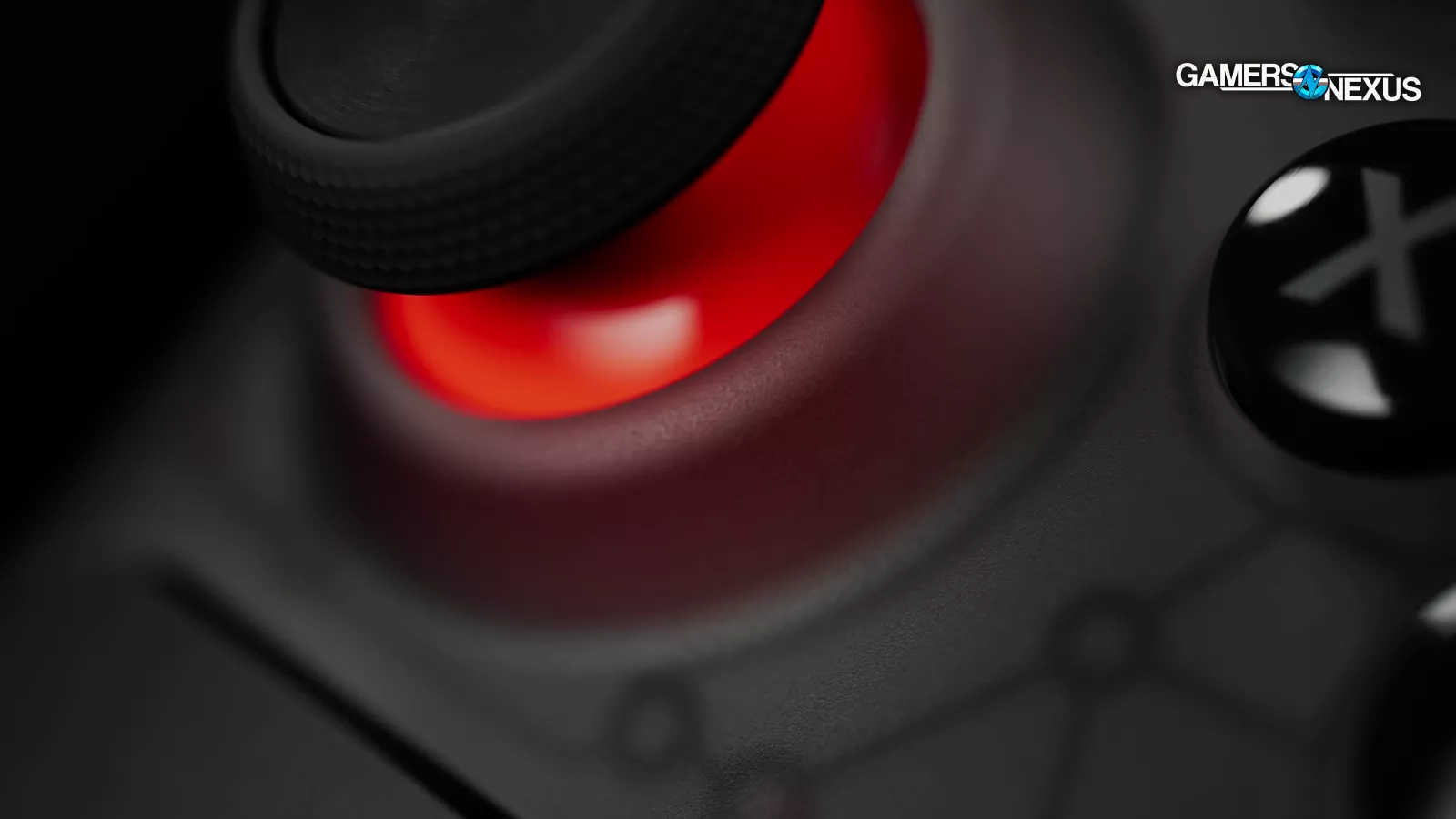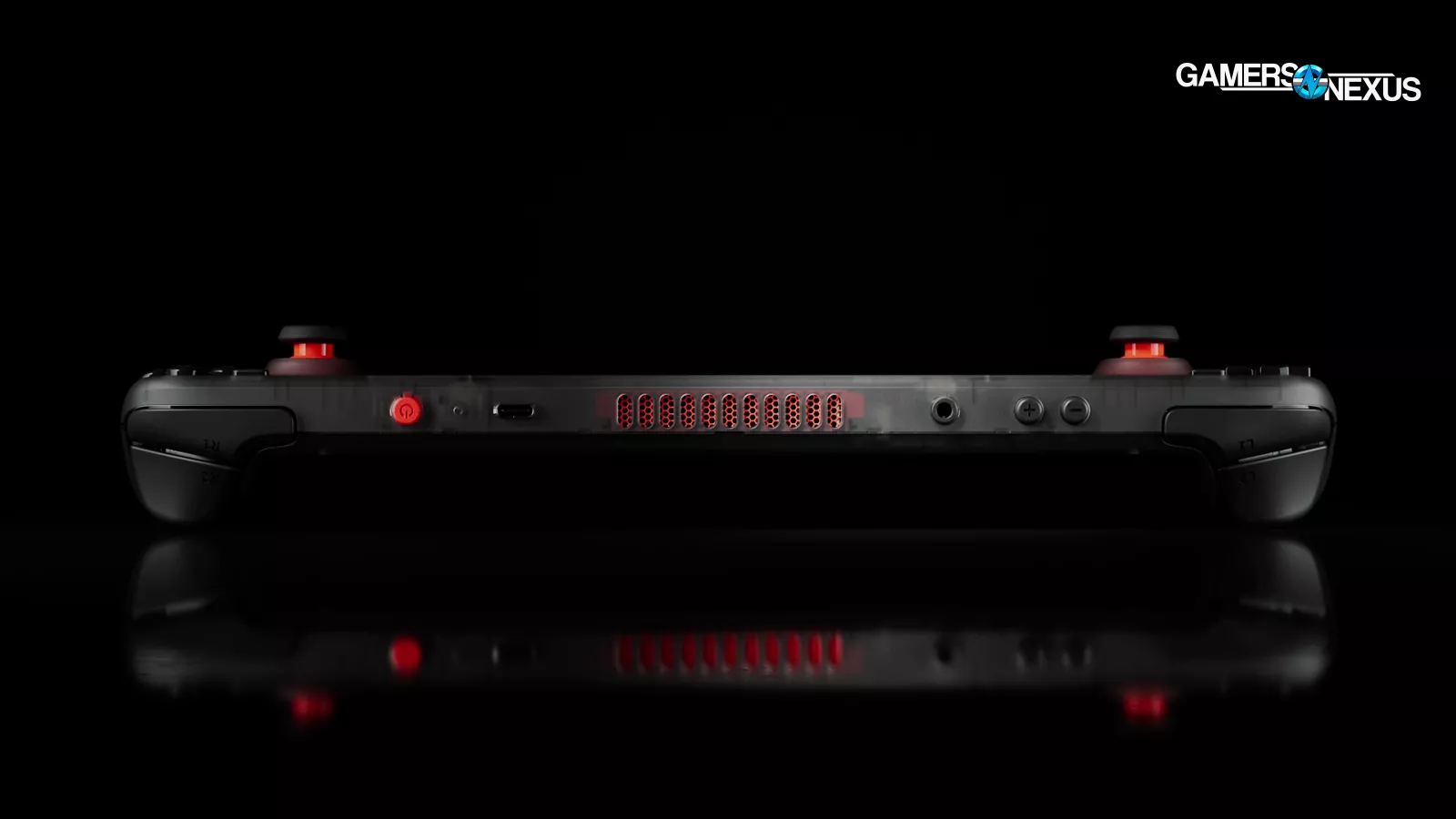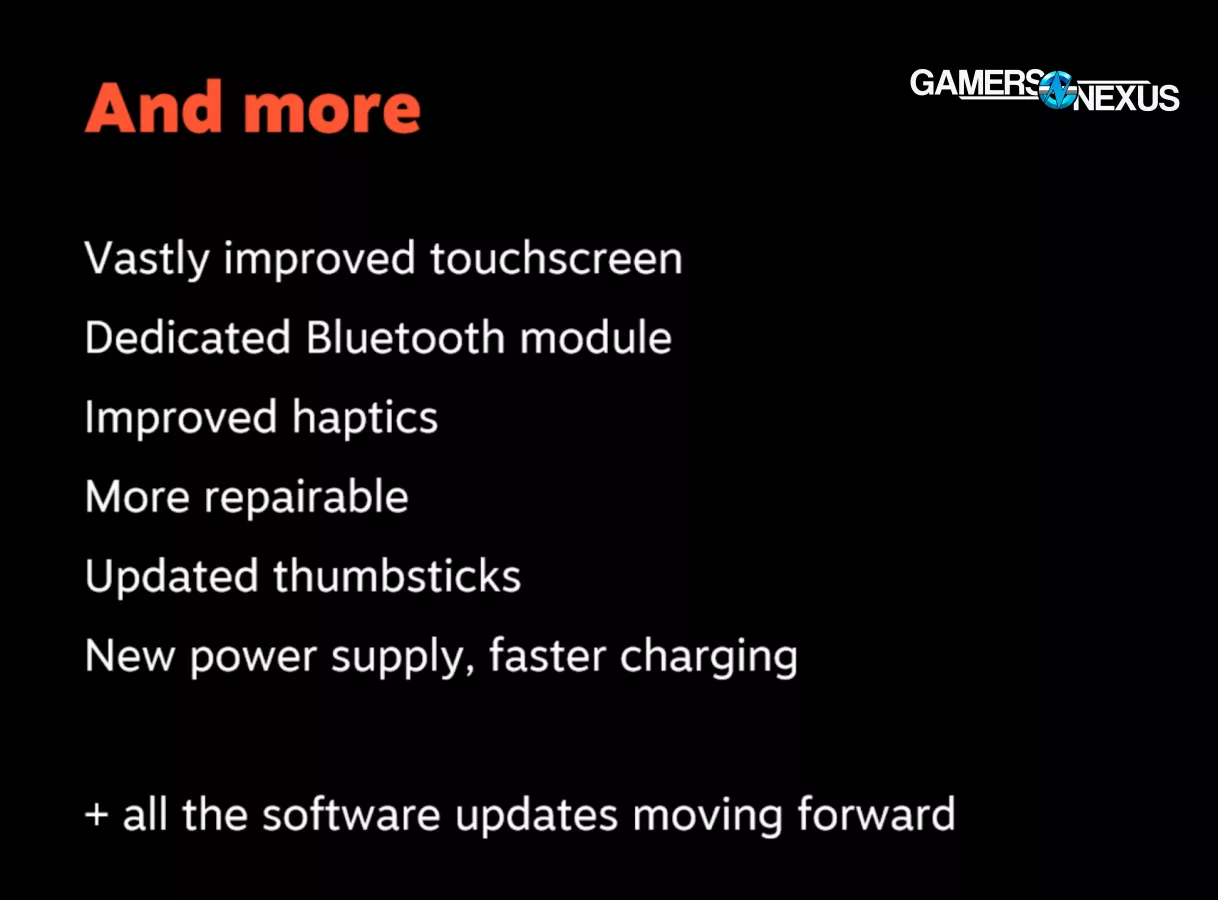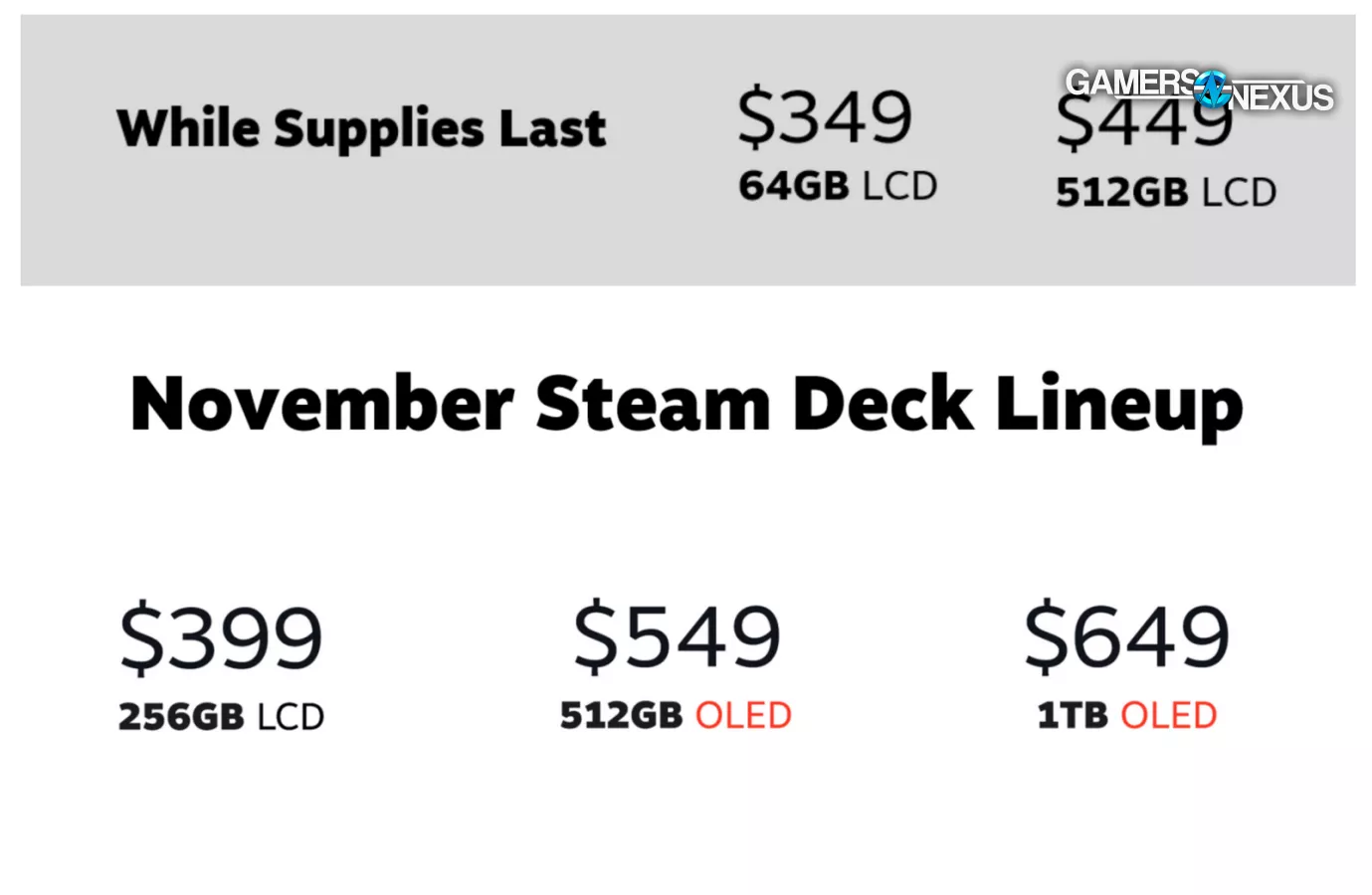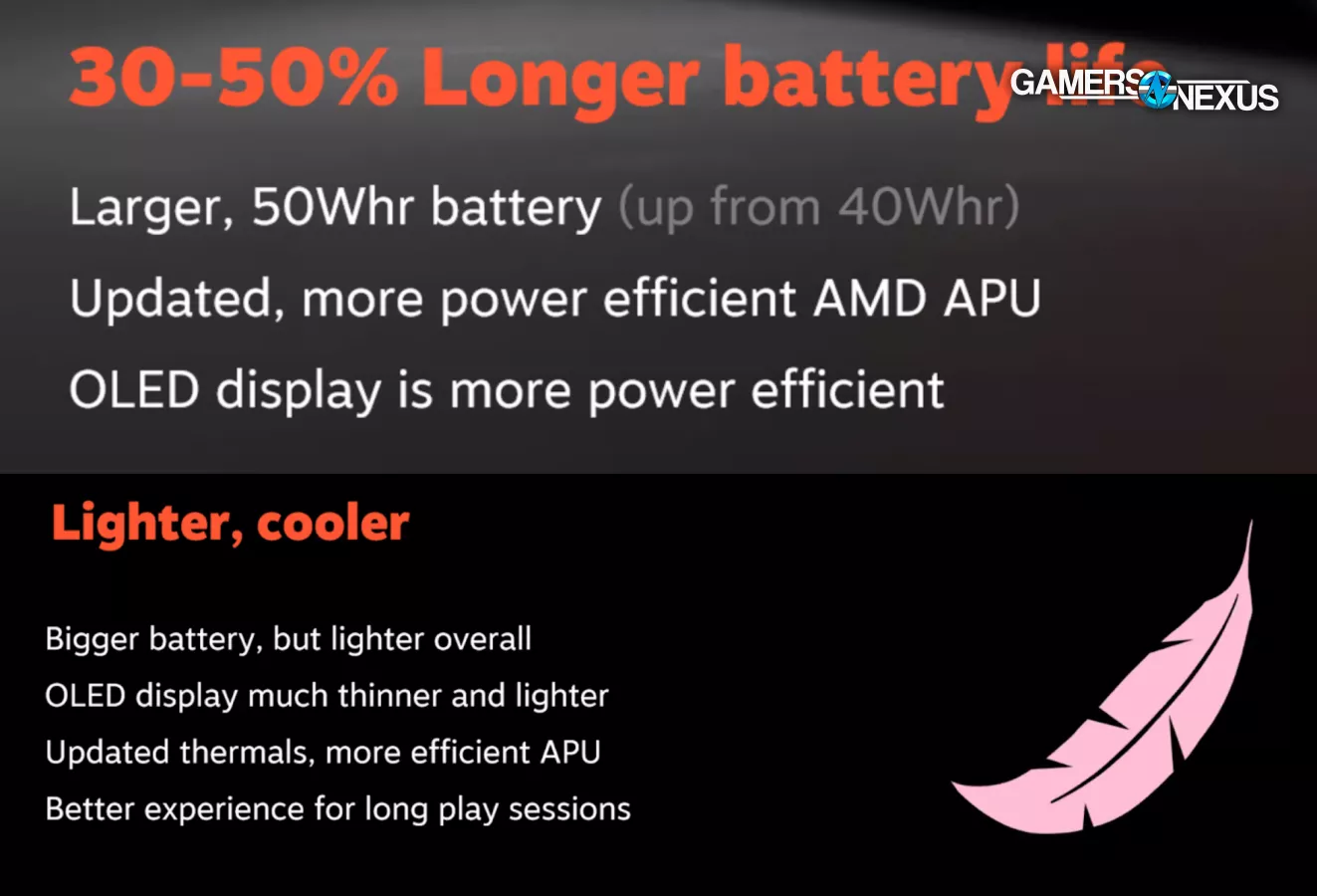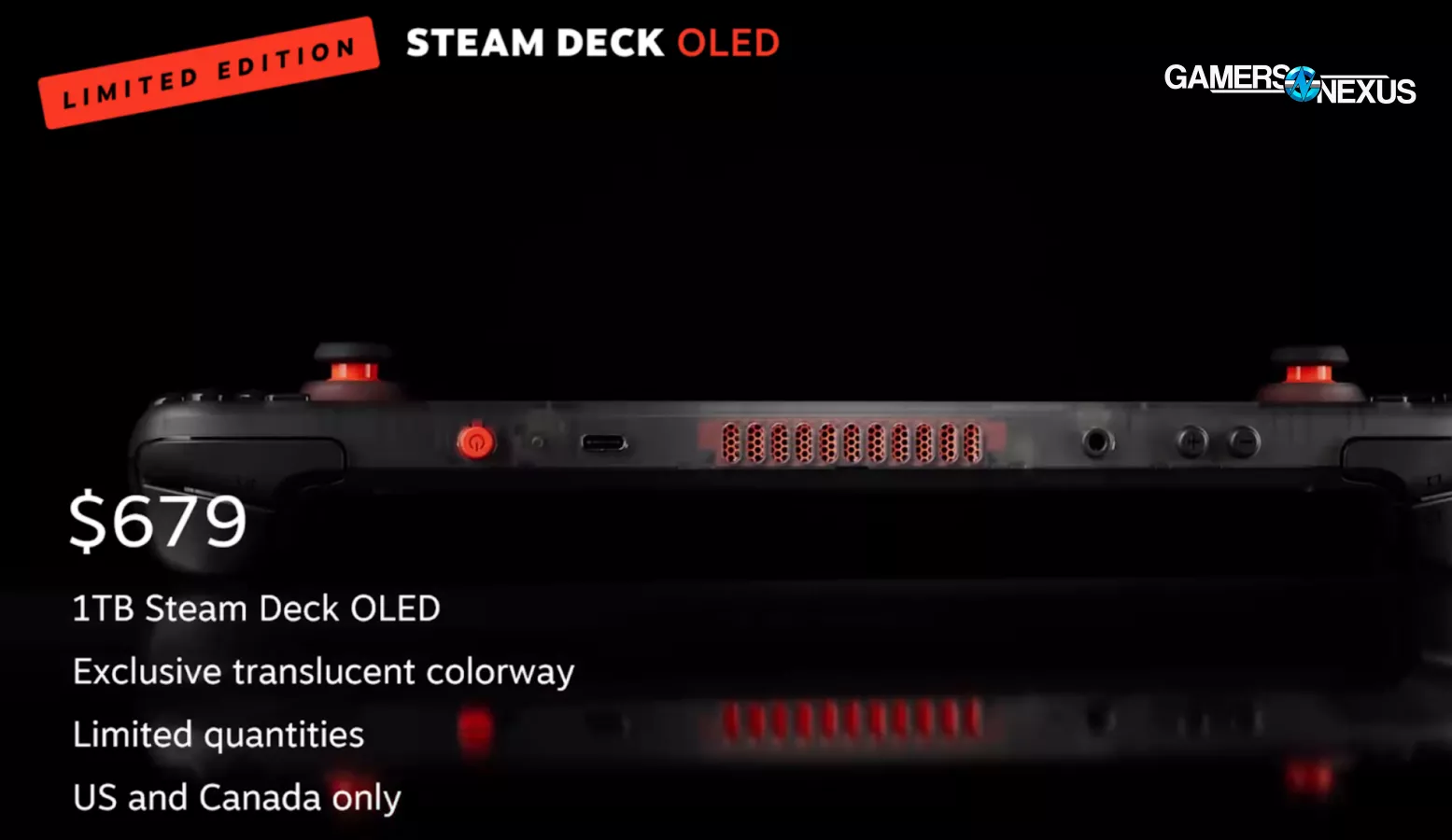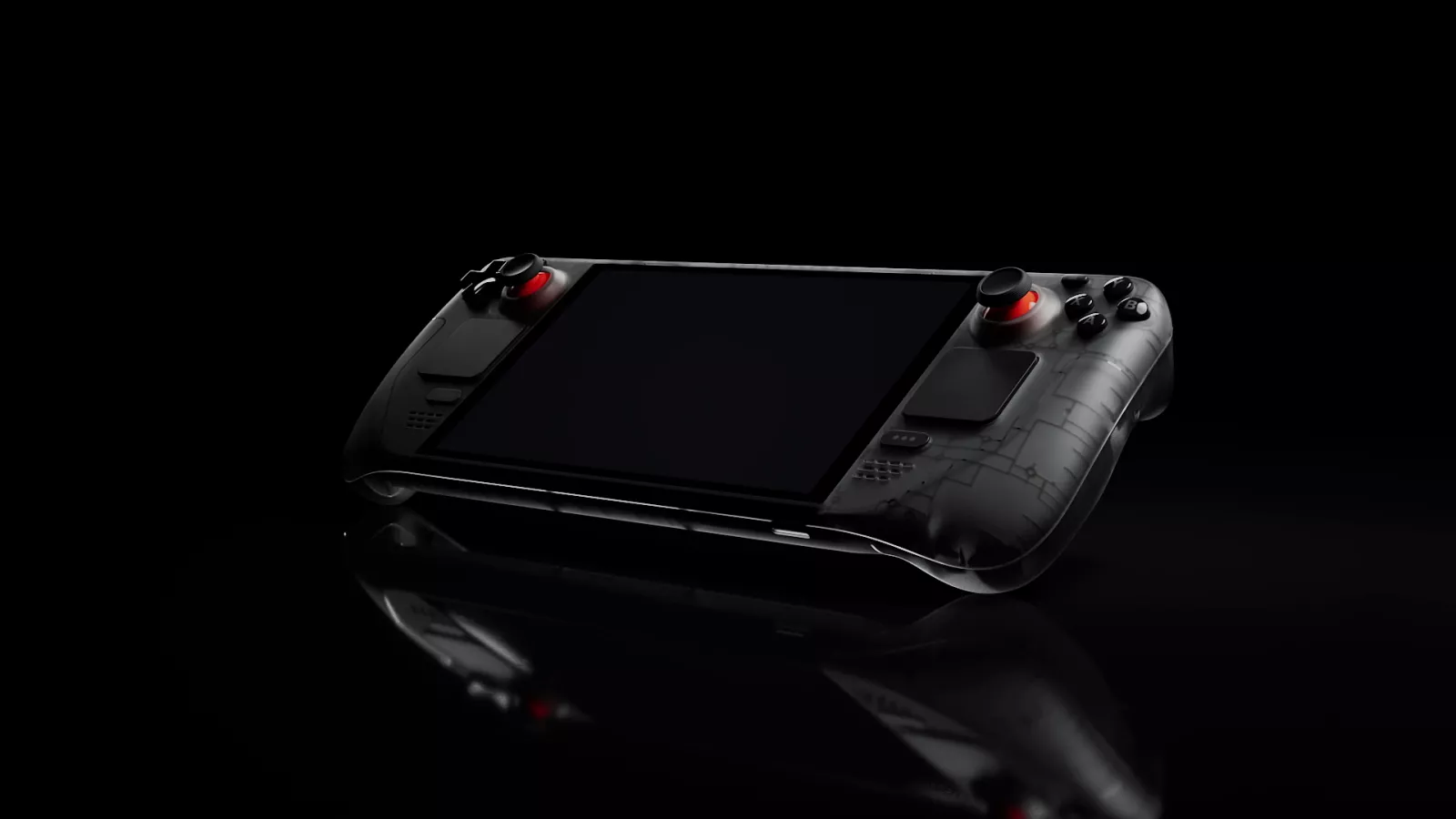
Valve just announced its new Steam Deck OLED, featuring improved battery, thermal, and screen solutions
The Highlights
- The Valve Steam Deck OLED will co-exist with some original models, which Valve has rebranded to "Steam Deck LCD"
- The Deck OLED improves the thermal and acoustic solutions
- This isn't a "Steam Deck 2," but Valve does have one in mind
- Original MSRP: $400 to $680
- Release Date: November 16, 2023

Valve today announced its new Steam Deck OLED with some changes to the fan, heatsink, battery, and screen, alongside a limited edition translucent & red model. The new Deck is a major revision and refresh and brings with it some price drops for remaining first-gen LCD Decks (Valve told GN that it is referring to the prior models as “Steam Deck LCD” for clarity).
We don’t have the Steam Deck OLED yet, but it’ll be arriving just after this video & article go live and will be working on a deep-dive thermal, acoustic, & power analysis that we hope to get live within the next few days. This will provide some detailed news coverage though, with additional information coming from a conversation with Valve.
Credits
Host, Writing, Web Editing
Steve Burke
Video Editing
Vitalii Makhnovets
Steam Deck OLED Overview
The release date for the new deck is November 16th at 10AM Pacific time, at which point Valve’s website will change the available options. The 256GB LCD model will remain and will be $400, the Deck OLED will arrive in the form of a $550 512GB model and $650 1TB model, the latter with Valve’s anti-glare etched glass. There will also be a $680 1TB Limited Edition in translucent chassis and red accent colorway. Valve says remaining supplies of the 64GB LCD and 512GB LCD will see price drops -- we’re not sure if those are effective as of this post going live or later -- and also noted that these two models will be discontinued.
Existing chassis modifications and skins will be compatible with the exterior shell of the new Steam Deck OLED. The interior is going through a design revision, but according to Valve, the exterior stays the same.
The Deck OLED has also gone through a node shrink with its AMD APU, now coming down to a 6nm process that results in an efficiency uplift for better battery life. We have more details on that, details directly from the engineering team about changes to the fan and battery, and more.
Steam Deck OLED Limited Edition Gallery (Translucent + Red)
Steam Deck OLED Specs vs. Original Steam Deck "LCD"
The following spec table has been provided by Valve to GamersNexus. GamersNexus has not yet independently verified claims, but intends to once the review unit arrives.
Valve Steam Deck OLED Core Components
| Steam Deck OLED | Original Steam Deck LCD | |
| Processor | AMD Semi-Custom | AMD Semi-Custom |
| Node | 6nm | 7nm |
| CPU Architecture | Zen2 | Zen2 |
| GPU Architecture | RDNA2 | RDNA2 |
| CPU Core Count | 4C/8T | 4C/8T |
| CPU Frequency | 2.4-3.5GHz 448 GFLOPS FP32 | 2.4-3.5GHz 448 GFLOPS FP32 |
| Compute Units | 8 | 8 |
| GPU Frequency | 1.0-1.6GHz 1.6 TFLOPS FP32 | 1.0-1.6GHz 1.6 TFLOPS FP32 |
| APU Power | 4-15W | 4-15W |
| Memory Capacity | 16GB | 16GB |
| Memory Spec | LPDDR5 6400 MT/s 4x 32-bit | LPDDR5 5500 MT/s 4x 32-bit |
| Storage | 512GB NVMe SSD 1TB NVMe SSD MicroSD Slot | 64GB eMMC 256GB NVMe SSD 512GB NVMe SSD MicroSD Slot |
In discussing this launch with Valve’s team, we were told that this isn’t a “Steam Deck 2,” but the "Deck OLED." They are retconning the Deck to “Deck LCD” for clarity. Valve told us that a Deck 2 is at least a few years out and that they are working on one, but they want to see new APUs to overhaul the core technology before it can be made. That means the Deck OLED will be the primary model for a while, as Valve doesn’t make the silicon and relies on AMD (for now) for those advancements. They are in the early stages of Deck 2 discussions, though.
The core specs are mostly familiar, but there are some key changes that improve power efficiency, screen quality, and theoretically might improve acoustics and thermals. We’ll be testing all of those as soon as our unit arrives.
Valve Steam Deck OLED Specs
| Steam Deck OLED | Original Steam Deck LCD | |
| Resolution | 1280x800 | 1280x800 |
| Type | HDR OLED | Optically bonded IPS LCD |
| Display Size | 7.4" diagonal | 7" diagonal |
| Maximum Brightness | 1000 nits peak brightness (HDR) 600 nits (SDR) | 400 nits typical |
| Additional Info | > 1,000,000 : 1 Contrast 110% P3 Color Gamut < 0.1ms Response Time Dual Ambient Light Sensor ALS | Ambient Light Sensor |
| Refresh Rate | 90Hz | 60Hz |
| Features | High performance touchscreen | Touchscreen |
The screen resolution and aspect ratio remain the same.
Heatsink, Thermal, Fan, & Battery Solution
We’ll start with the heatsink, battery, and fan.
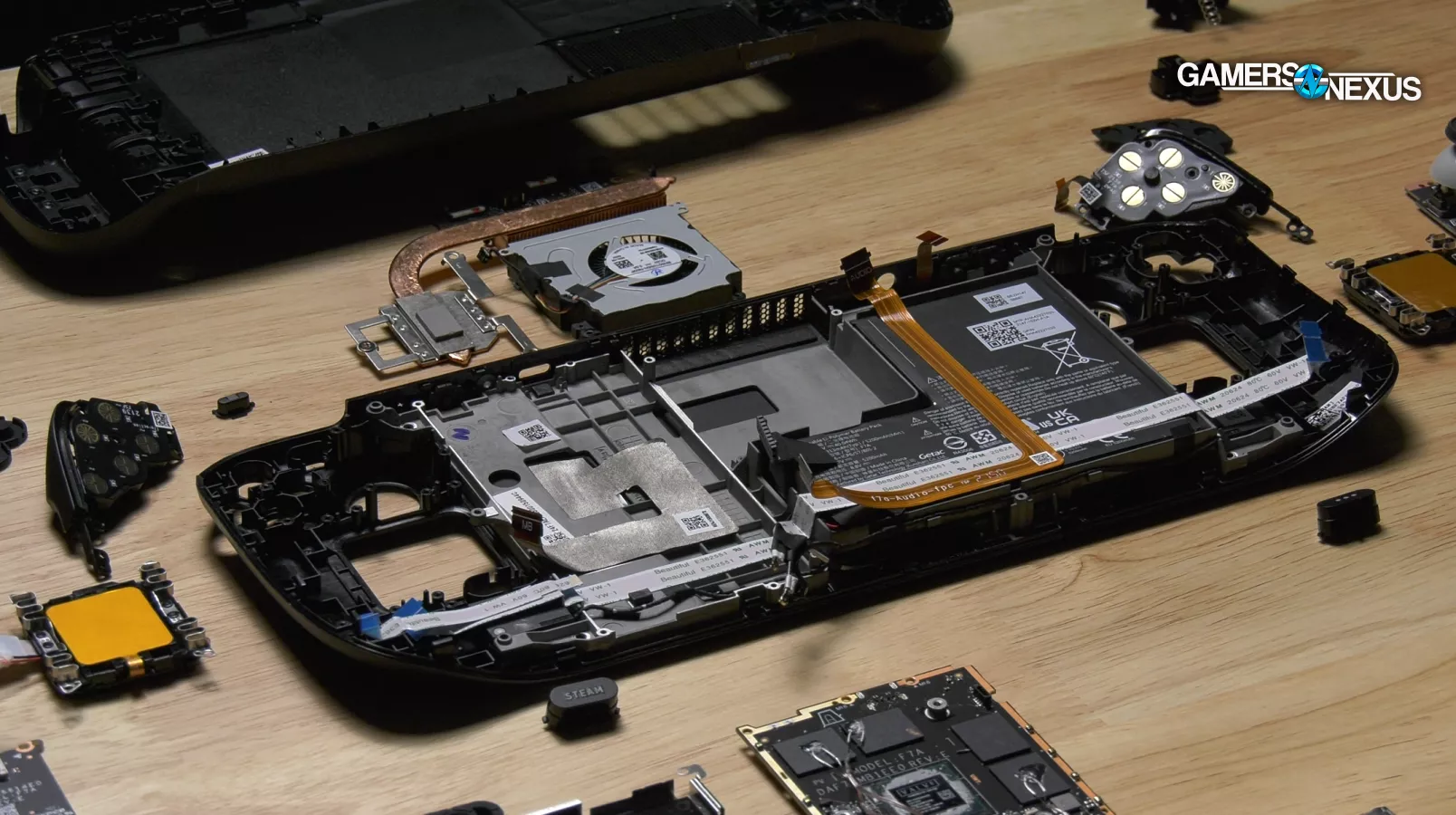
The move to an OLED display brings with it a lot of advantages. The OLED screen is smaller than the prior LCD, which means more space within the Steam Deck chassis for other components and reduced weight from the screen, despite a larger usable area of the display. The other benefit is a power savings, where black on the OLED will just be toggled pixels, reducing power consumption (among other technological improvements benefiting battery).
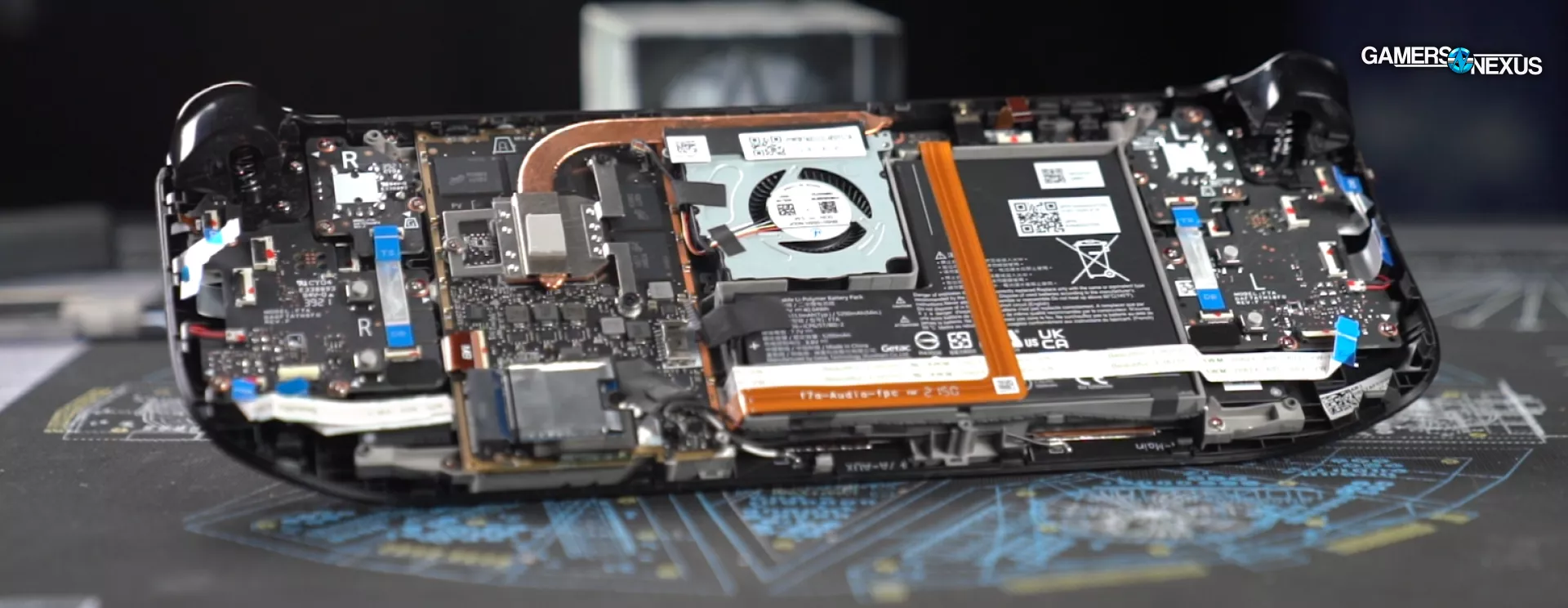
This is what the original internals looked like. Valve has now increased the battery capacity from 40Whr to 50Whr by utilizing what used to be space occupied by the display.
Valve Presentation, Steam Deck OLED Price, & Claims
Valve has also changed the heatsink and fan, moving to a 14% thicker impeller and 15% thicker fan body, but maintaining the same fan diameter. We estimate these changes may help with acoustics by providing a stiffening effect on the fan. We’ll test that in our anechoic chamber.
The old heatsink also got an upfit: Its individual fins in the finstack have been increased in thickness by 12%, which provides some more mass. The old heatpipe has also been changed, now with a size increase. Valve's media contact didn’t have the exact diameter when we spoke yesterday.
The theory is that these changes should allow for a more prolonged hysteresis or gradual fan curve where the fan can behave in a steadier fashion. There should be less fan ramp / de-ramp, something we observed in our original Steam Deck testing under some test conditions. This will help with acoustics.
Power Consumption & Battery Life
Battery life is improved in a few ways with this model. The old battery has had a size increase to 50Whr due to additional real estate internally, but it also benefits from power savings across the platform.
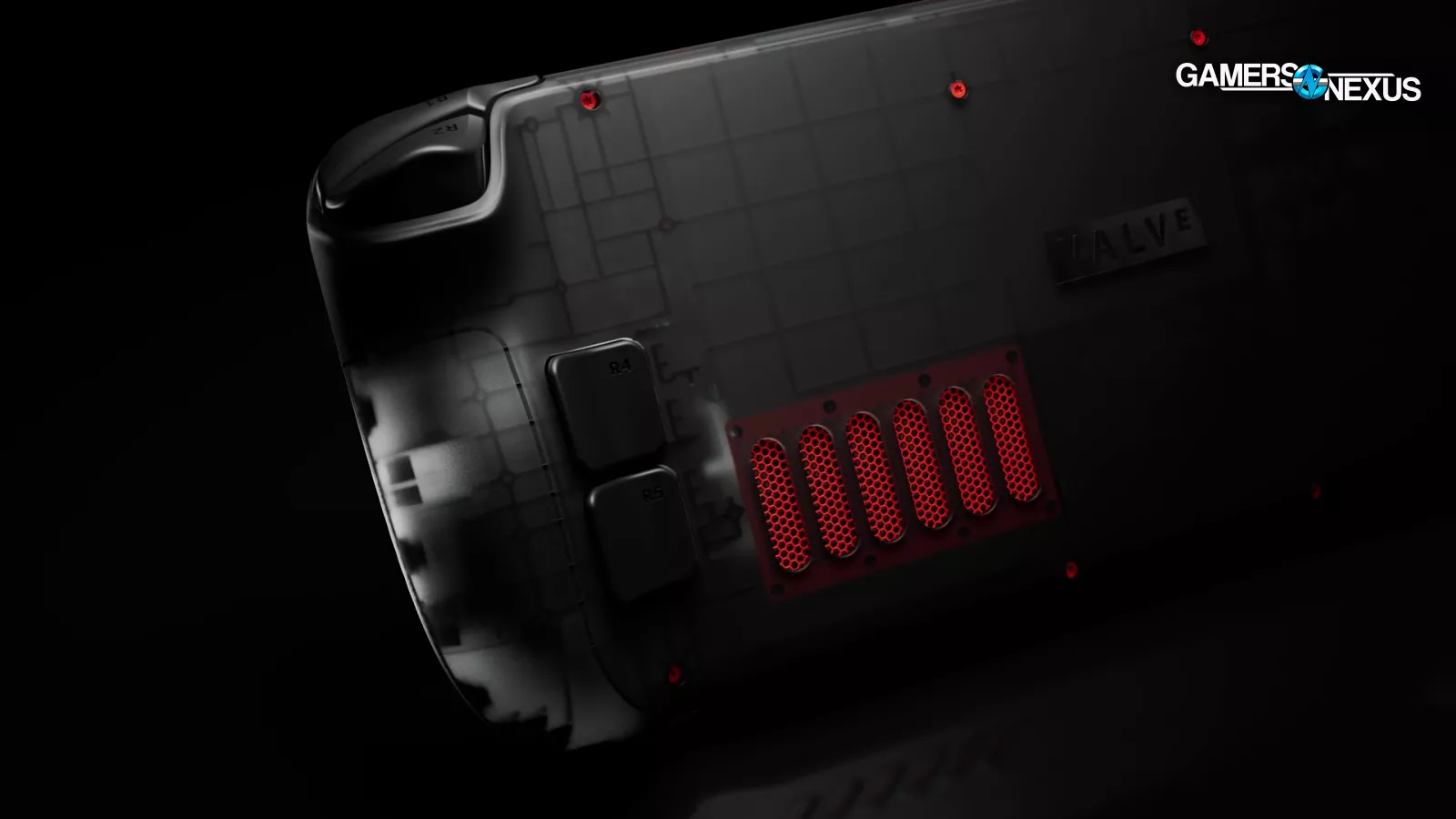
The APU combines a Zen 2 4C/8T CPU and an 8-CU RDNA2 GPU, making it the same spec as the original Steam Deck APU. Clocks are also the same. Speaking with Valve, the company said that there should not be a change to gaming performance; however, Valve says that the die shrink to 6nm will result in an efficiency bump.
That said, there are some spec changes that could result in performance improvements in certain conditions: The memory has been changed from an LPDDR5-5500 solution to LPDDR5-6400. Capacity and channeling are the same, but there was a speed increase.
In total, Valve claims that these changes will result in 30-50% longer battery life, depending on test conditions. Valve’s new spec sheet is marketing “3-12 hours of gameplay,” depending on game and load. The original Steam Deck LCD was marketed for 2-8 hours. Our Steam Deck review (of the original) contains our own battery life testing.
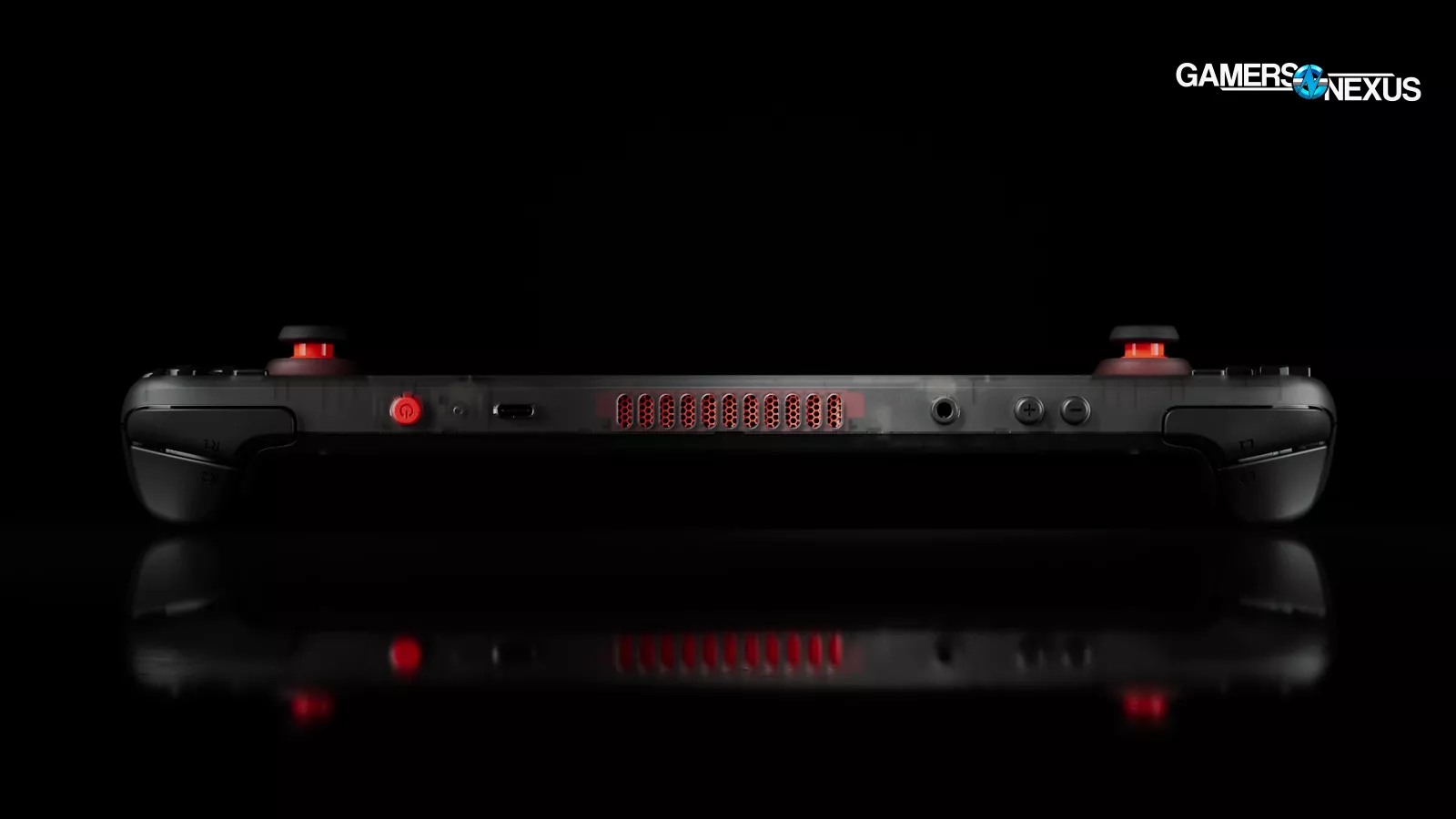
Valve also noted faster charge times, telling us that it will charge from 20% to 80% within 45 minutes. We will be benchmarking this as well.
Finally on the power front, the charging cable length has increased to 2.5m from 1.5m. The charger spec is otherwise the same.
The OLED Display
We’ll go over the display now.
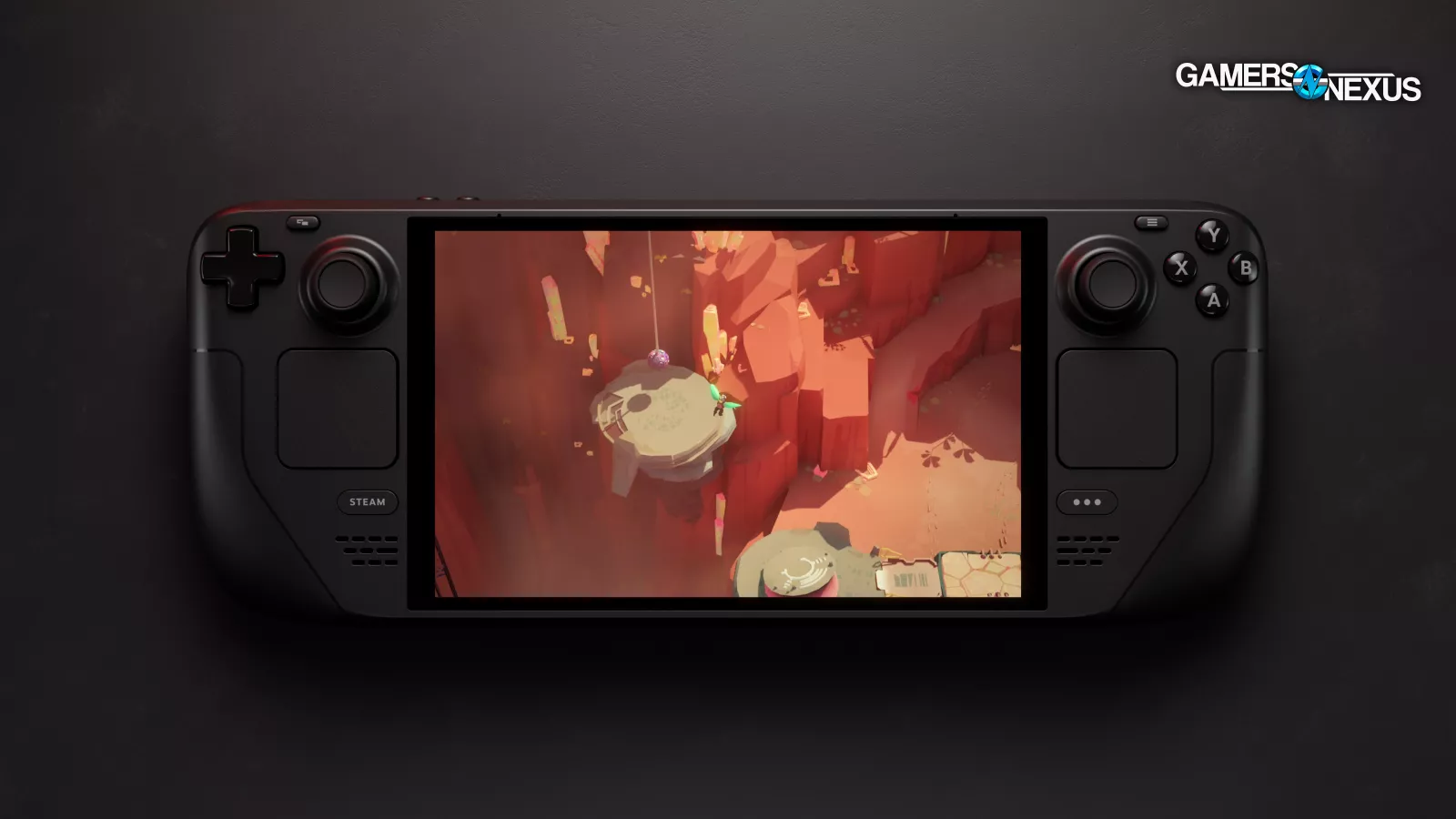
Valve’s new display retains the 1280x800 resolution, but moves to a larger size with a reduced bevel and 7.4” diagonal screen. The prior display was 7” diagonal. The chassis is the same, so the difference came from the bezel.
The display is also HDR capable. Valve said that this was the “first handheld with HDR OLED,” but qualified it by saying “that we could find.” Fair enough.
The spec is 1000 nits peak brightness with HDR, 600 nits with SDR, 110% P3 color gamut, and the display moves to a 90Hz solution (from 60Hz) with a 0.1 ms claimed response time. This positions Valve to more directly compete with the Ally (which we reviewed in a deep-dive piece).
Valve has also improved the touch screen to a 180Hz polling rate for faster scrolling, typing, and overall touch input responsiveness.
To get ahead of the obvious question: Valve says that you will not be able to swap the OLED screen into the LCD model Deck. Whether or not a third-party could build a module, we won’t know without looking at the construction. But Valve says a straight swap won’t be possible.
The display also helps the device come down to 640g from 669g advertised weight, despite the battery size increase.
Control Changes, Input, & Repairability
The next topic covers control and input changes and repairability.

Valve is moving to Torx machine screws everywhere, plus metal screw bosses on the receiving end. This will help prevent stripping by users and fulfills Valve’s stated objective of further improving repairability. The Deck already had support from iFixit and other third parties for repairs, and Valve intends to expand that.
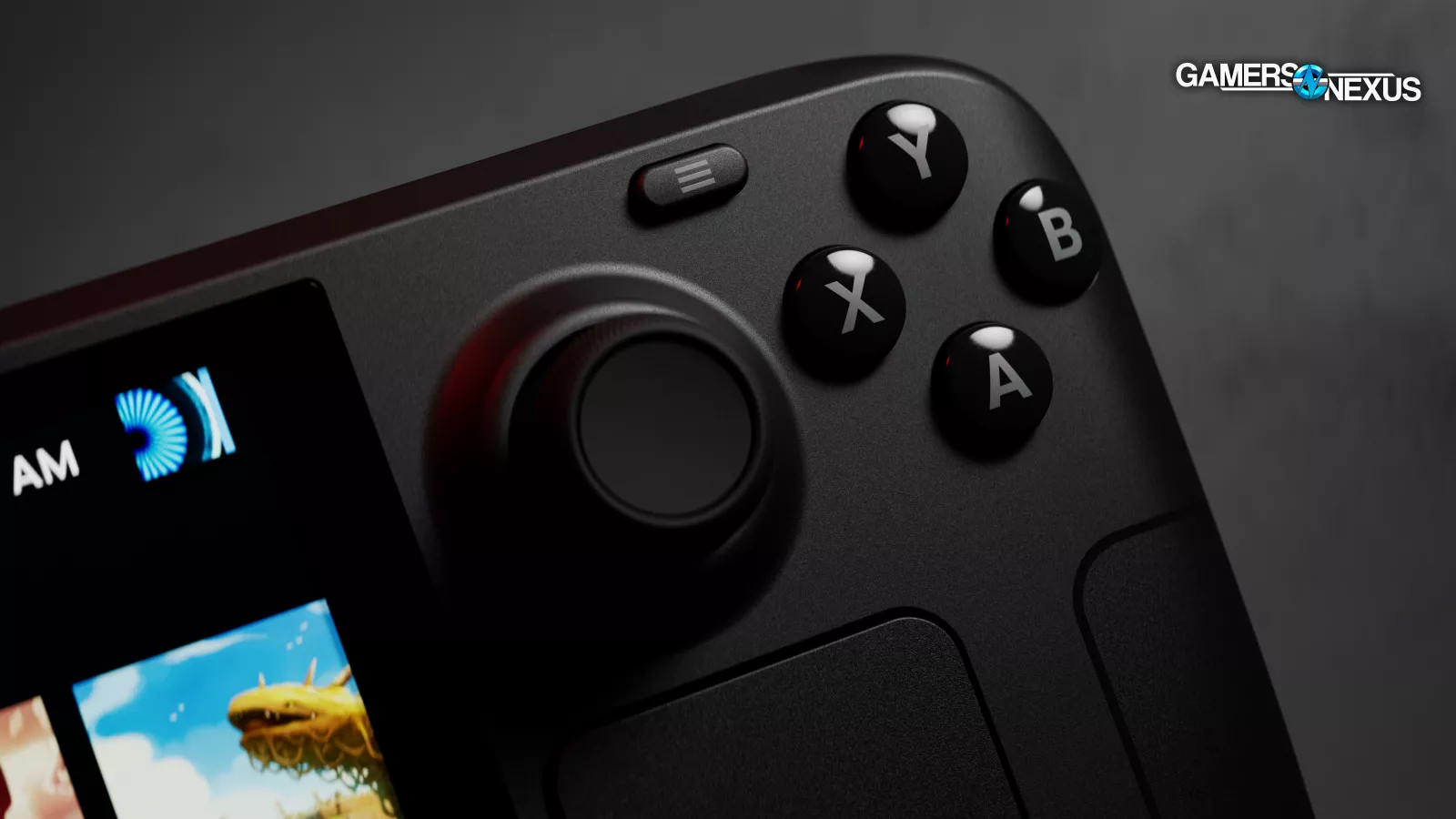
The thumbsticks will be changed to use a new material with a grippier surface, responding to what Valve says is feedback from the community. Valve will also be moving the bumper onto the same daughterboard as the thumbstick, although they will be externally positioned in the same place. This change should improve bumper strength, particularly in a drop.
Valve redesigned its touchpad and has rebranded it as “HD Haptics.” The company said that it should be more precise.
Valve also said that the display is now replaceable without taking off the back casing, but is not interchangeable.
The battery still uses adhesive and the SD card remains in the same accident-prone location, so be sure to remove the SD card when opening the Deck.
There were also changes to Bluetooth, updated to 5.3, audio codecs, and WiFi has moved from WiFi 5 to WiFi 6E. If the internet speed can accommodate it, Valve noted a significant increase in download speed via Steam due to reduced congestion on the 6GHz band.
Additionally, Valve’s new module will reduce crosstalk between Bluetooth and WiFi when docked.
Software & Conclusion
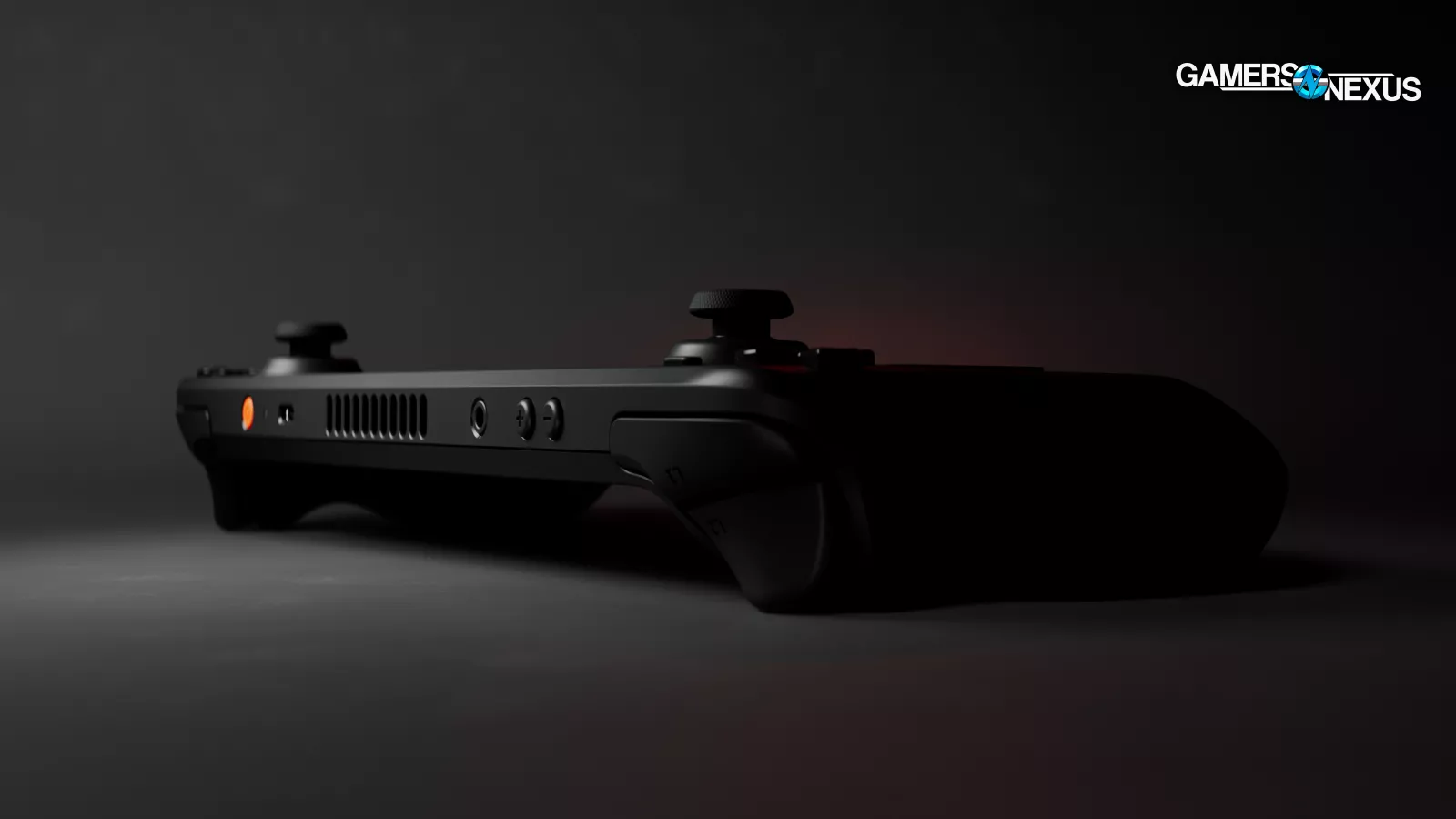
A few final notes on software: Valve told us that it is still working to get its SteamOS software available as a general install, which would mean you could install it on the Ally or other devices. In the interim, they made some software changes to accommodate the 90Hz refresh rate of the display, worked on a frame limit slider, and added HDR support in software.
As for Valve’s Limited Edition variation of the Deck, it’s functionally equivalent in all ways to the high-end model Deck OLED, but has a translucent body with red accents on the mesh, some of the buttons, and the thumbsticks. Valve says that this is an experimental run mixing its supply chains, so for logistical reasons, they are limiting production. If it sees this as successful -- which, let’s be real, it will sell out immediately -- Valve says it will explore more concepts like this for future models.
That covers it for now. We are getting our unit in today (the day this post goes up), but we put together the best news content we could for you in the meantime. Check back for the in-depth review in short order. To support our written, ad-free reporting, please consider subscribing on Patreon, donating directly as a one-off, or buying a GN Solder & Project Mat, Modmat, glass, or shirt.

